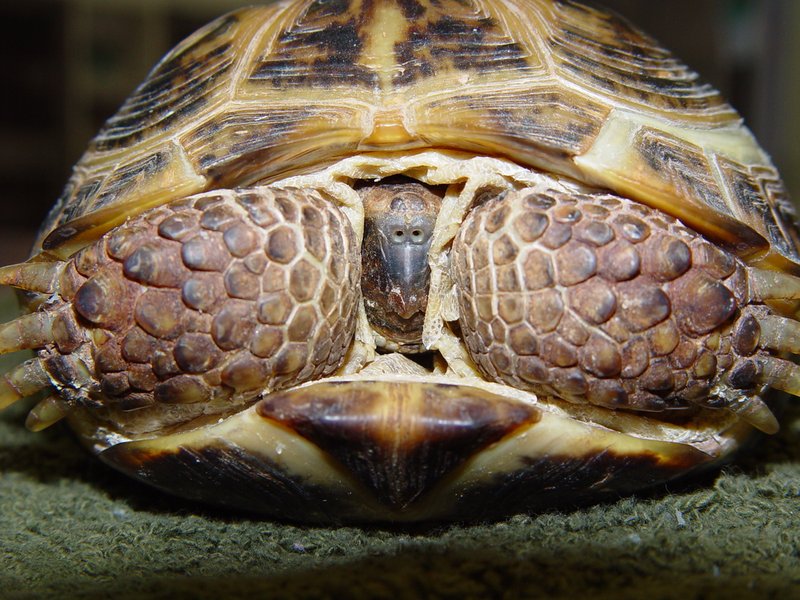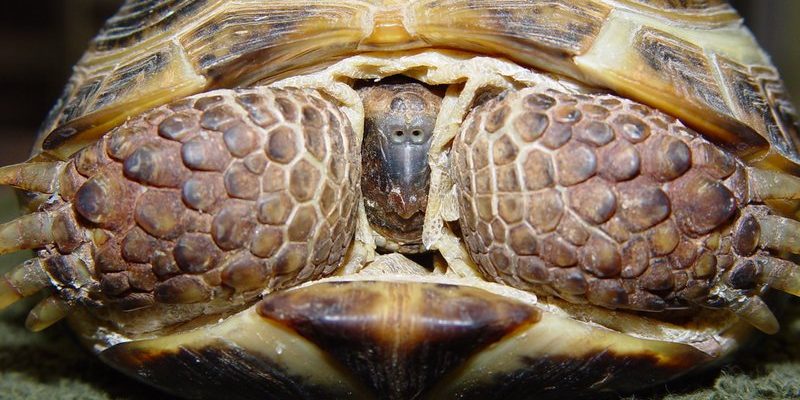
The Russian tortoise, known scientifically as *Testudo horsfieldii*, is a land tortoise native to the arid regions of Central Asia, especially around Russia and surrounding countries. Their history is sprinkled with thousands of years of adaptation and survival. This story weaves through climatic changes, environmental challenges, and even human impact. So, grab your metaphorical explorer’s hat, and let’s embark on this journey through time!
Origins of the Russian Tortoise
The Russian tortoise’s ancestors started slithering around Earth about 200 million years ago. Yes, you read that right – they’ve been around since the time of dinosaurs! They belong to a group called Testudinidae, which is full of tortoise varieties. These early tortoises were more widespread, inhabiting various regions and adapting to their surroundings.
As the planet’s climate shifted over the millennia, so did the habitats of these tortoises. They adapted to desert-like environments, developing a robust shell and a diet that could sustain them in places where food was scarce. Their ability to conserve water and endure extreme temperatures set the stage for their survival. It’s kind of like how a well-prepared camper learns to adapt to the wilderness. These traits have allowed the Russian tortoise to thrive even in the harshest conditions.
You might be wondering how these adaptations specifically help them. Well, their hard shell acts like a protective fortress against both predators and the harsh elements. Furthermore, they’ve developed a herbivorous diet that consists mainly of grasses, leaves, and flowers, allowing them to find sustenance in their dry habitats.
Adaptation to Environment
The Russian tortoise’s evolutionary journey is all about adaptation. Think of them as a team of experts, adjusting their strategies to survive in a constantly changing world. Their sturdy, domed shell doesn’t just look cool; it’s a key part of their survival. It helps them retain moisture and shield against predators, acting as both armor and a water bottle.
In addition to their shells, these tortoises have developed behavioral adaptations that are impressive. For example, they’re burrowers. By digging into the ground, they create homes that help them escape the scorching sun. This behavior is similar to how people might find shade under a tree on a hot day. When the temperatures drop, their burrows also serve as a cozy winter retreat, allowing them to hibernate until spring.
Their lifestyle revolves around foraging for food while being aware of their surroundings. This adaptability has been crucial for their survival, especially as their habitats have shrunk due to human activities. Despite these challenges, their resilient nature continues to keep them thriving in their native habitats.
Historical Significance
Throughout history, the Russian tortoise has played an important role in various cultures. In some parts of Asia, they symbolize strength and longevity, often appearing in art and folklore. This tortoise has been a part of human history for centuries, with evidence of domestication dating back to ancient times.
The tortoise’s slow and steady lifestyle has often been celebrated in stories, reminding us of the value of patience and perseverance. Think about the famous fable of the tortoise and the hare – this character embodies the idea that slow and steady wins the race. For many cultures, the Russian tortoise has become a symbol of wisdom, stability, and endurance.
However, it’s not all about glory. These tortoises have faced significant threats due to habitat destruction and illegal pet trade. Their historical significance adds depth to their story, but it also raises awareness about the need for conservation efforts. After all, no story is complete without a bit of conflict, right?
Conservation Status
In recent years, the Russian tortoise has faced critical challenges that threaten its survival. Habitat destruction due to urbanization and agricultural development has been a major issue. Additionally, these tortoises are often captured for the exotic pet trade, which exacerbates their decline in the wild.
Recognizing the importance of conserving this species, several organizations and governments have begun implementing protective measures. For example, laws have been established to prevent illegal trade, and breeding programs are being set up to increase their population. It’s like a community coming together to protect a beloved local treasure.
Conservation efforts also educate people about the significance of preserving these creatures and their habitats. By raising awareness, we can foster a sense of responsibility and stewardship toward our natural world. After all, the Russian tortoise’s story is not just about them; it’s about all of us as caretakers of the planet.
The Future of the Russian Tortoise
Looking ahead, the future of the Russian tortoise is uncertain but not without hope. With continued conservation efforts and public awareness campaigns, there’s a chance for this species to thrive again. Just like rebuilding a bridge, it takes time and effort, but the end result can be worth it.
Researchers are also focusing on understanding their behavior and habitat needs better to help them adapt to changing conditions. This type of research acts as a tool, similar to how mechanics use a wrench to fix a car. By studying their habits and needs, we can create better conservation strategies that cater to their specific environments.
You might be thinking, “What can I do?” Simple actions such as supporting conservation organizations or choosing not to purchase exotic pets can make a big difference. Even sharing information about these tortoises with others helps spread awareness and encourages more people to take part in protecting our planet’s diverse wildlife.
The evolutionary history of the Russian tortoise is a tale filled with resilience, adaptation, and significance. From their ancient roots to their current challenges, these little creatures remind us of the intricate connections we share with nature. As we learn more about them, we become better stewards of our environment, ensuring that their story continues for generations to come.
Whether you’re a nature lover, a casual observer, or just someone curious about the world, there’s a lot we can appreciate about the Russian tortoise. They embody the spirit of endurance, teaching us valuable lessons about patience and survival in a changing world. As caretakers of the Earth, let’s do our part to ensure that this story remains vibrant and full of hope.

